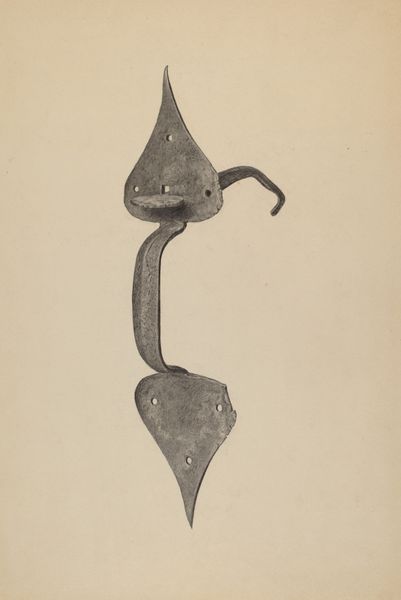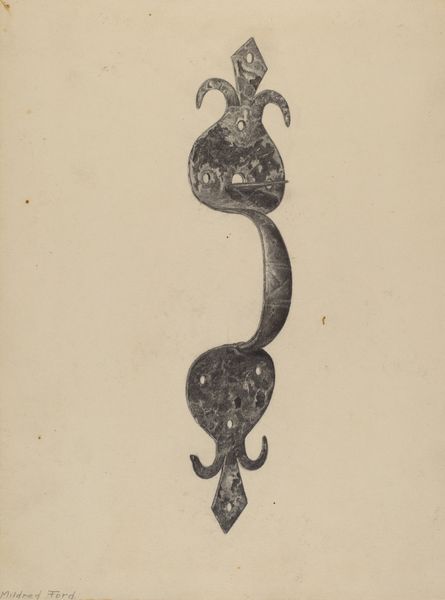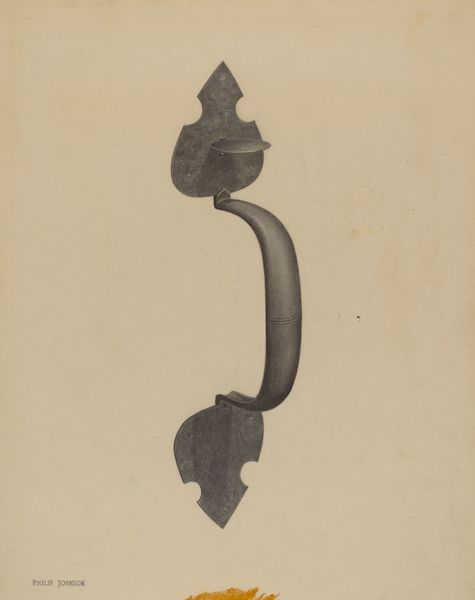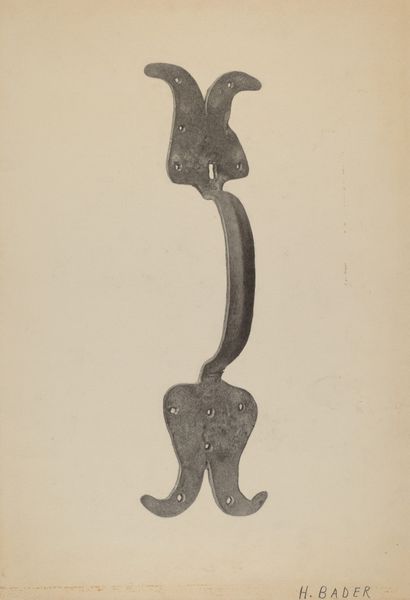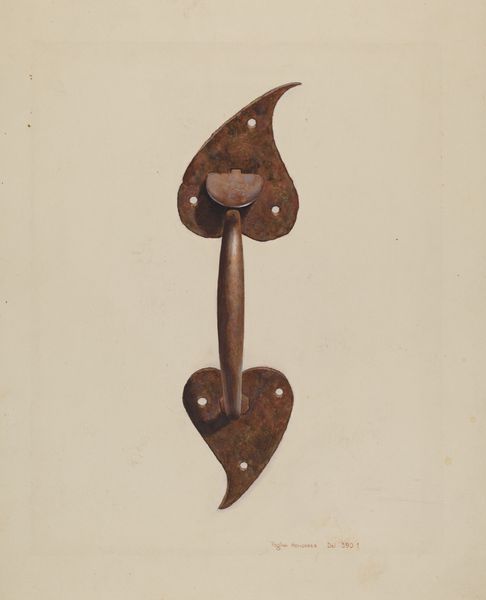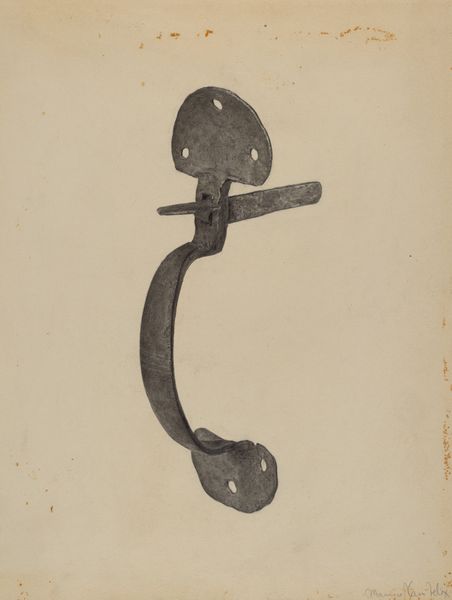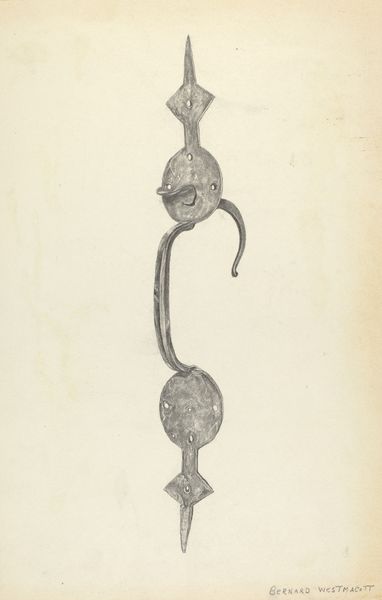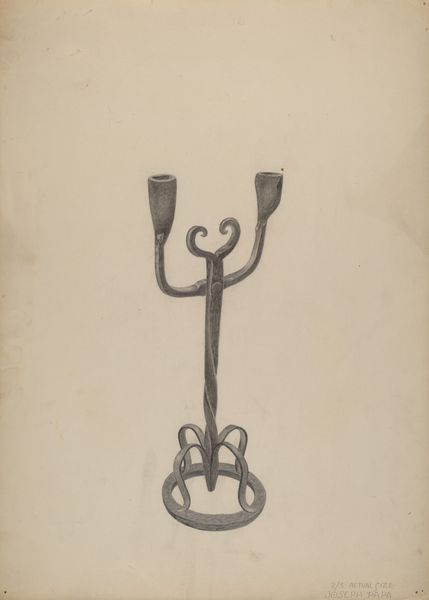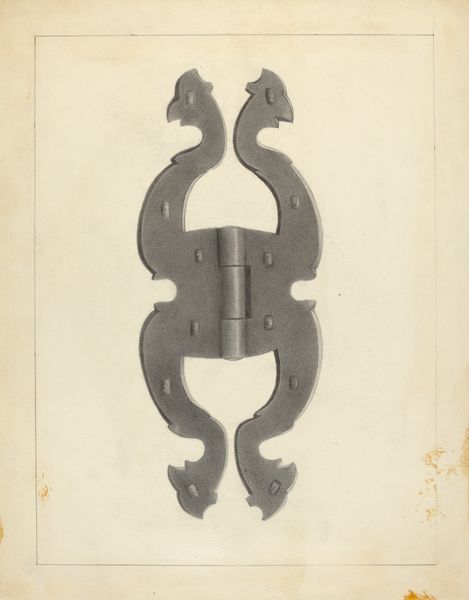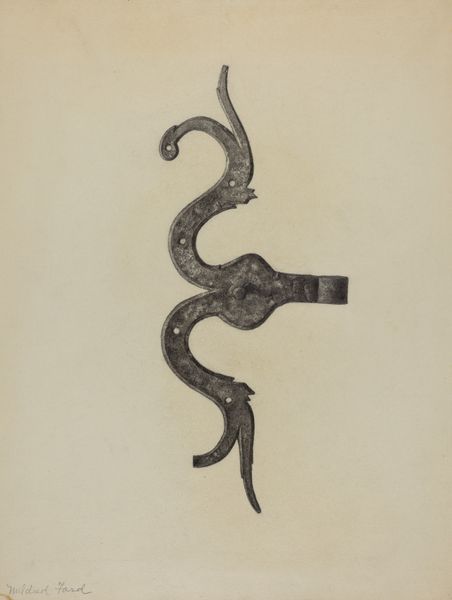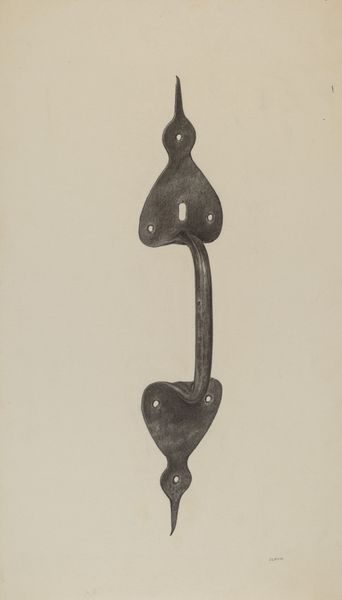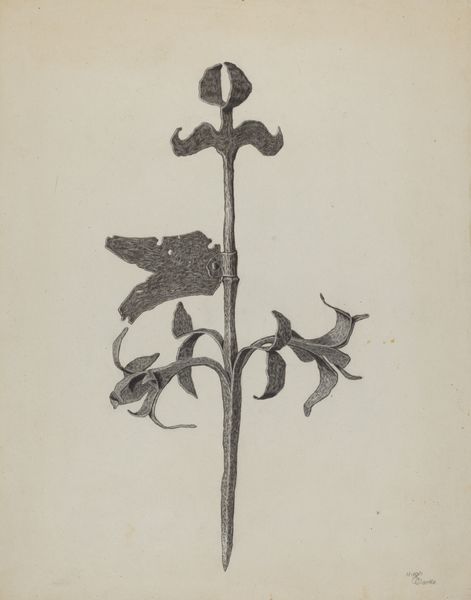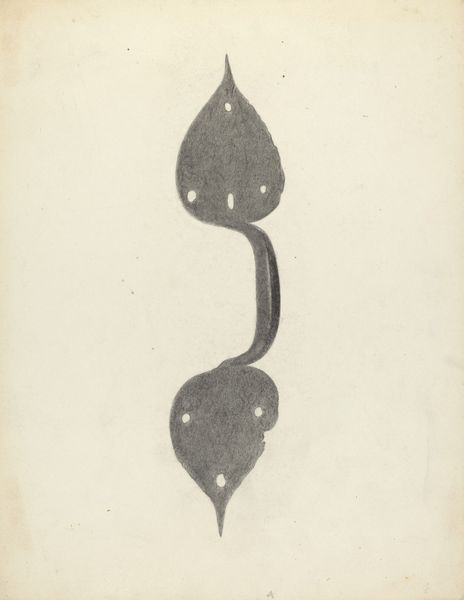
drawing, pencil
#
drawing
#
pencil drawing
#
geometric
#
pencil
#
realism
Dimensions: overall: 28.8 x 22.5 cm (11 5/16 x 8 7/8 in.) Original IAD Object: 19 3/4" long; 3 1/4" wide
Copyright: National Gallery of Art: CC0 1.0
Editor: So, this is Jack Staloff's "Pa. German Door Handle" from around 1938, rendered in pencil. I find it really interesting that something so utilitarian is given this artistic treatment. What strikes you about it? Curator: I'm interested in the drawing itself as an object, the physical properties of the pencil on paper. Think about the labor involved in rendering this object so meticulously, this piece becomes not just a depiction of a handle but a document of craft itself. It invites us to consider what defines 'art' versus 'utility'. Editor: That's a perspective I hadn't considered. It is pretty meticulous! Do you think the artist was making a statement about valuing craftsmanship? Curator: Possibly, yes. We could look into the broader context, like, were there debates about the role of craft during the time this was created? How were "folk crafts" like these being valued? This isn't just about looking; it is also about learning the story behind this ordinary-looking, everyday piece. How might the economic or social climate have shaped the decision to immortalize something so humble? Editor: I suppose it challenges our notions of what's worth preserving or considering "artistic." Like, why *this* handle? Why not a painting of something grand or beautiful? Curator: Exactly! The drawing asks us to reflect upon labor, industrialization, and how they interact. Even the choice of medium - humble pencil - reinforces that question, and invites us to think about material and consumption and what these represent for the working person. Editor: So, this drawing acts as a record, not just of the object, but also of a specific time and way of valuing work? I am sure I will never look at another handle the same way. Curator: That's the point; it makes you stop and think! It forces you to ask questions that go far beyond simple aesthetic appeal and consider other factors. I guess we can agree there is always more than meets the eye.
Comments
No comments
Be the first to comment and join the conversation on the ultimate creative platform.
